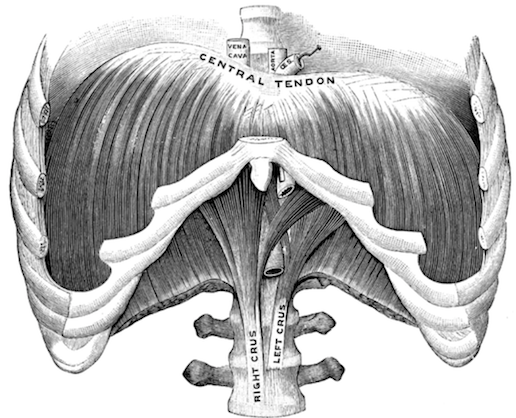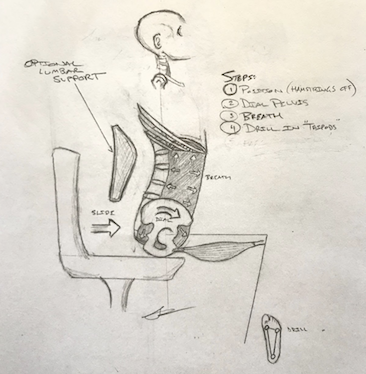Product Summary
The first step in sports hernia rehab is rebuilding the other sections of the abdominal region that support and encourage the repair of the strained location.
RUNNING, TURNING AND TWISTING AGAIN WITH CONFIDENCE IS POSSIBLE.
You just need to find the correct program.
The magic is working around the irritation in a STRATEGIC, NON-PAINFUL way.
Weeks of bedrest and avoidance of activity are ill advised in most cases of sports hernias. Allow me to walk you through the process I use with my patients, step-by-step in this video course.
RESTORATION OF PROPER BREATHING!
What’s included in this online program?
– All of the information you need to rehab sports hernias in one place
– Effective, easy to follow, corrective exercise videos
– Exercises targeting the “deep core” and hips
– Postural & lifestyle suggestions to reduce relapse potential
– Reference of research
FEELING BETTER IS JUST A FEW WEEKS AWAY!
Groin pain is frustrating. Nearly every call I’ve gotten from someone suffering from a sports hernia is the same story…
It doesn’t hurt when I don’t play my sport or run.
I rested (or did therapy) for weeks/ months and it seemed a little better.
I went back to play (insert sports) and it came back within minutes.
My doctors says rest it more, medicate, and ice as needed.
Help, I want to play my sport again!
Most of these people have tried the “traditional method” with little results. Groin pain doesn’t have to be the end of your sporting career.
In my clinic, I’ve had amazing success resolving groin pain in athletes ranging from high school soccer to adult recreational ultimate frisbee players.
Since so many people seem to be plagued with chronic groin pain, I felt the need to expose the foundations of our rehab to the public in this video course.
Each week contains videos and explanations that are easy to follow, and can be consumed on any mobile device.
Framing the Logic to Rehab
I like to start with framing why I program what I do because most people will default to braces, massage, medication, and excessive rest with sports hernias, which is not wrong but only about a quarter of the full rehab picture.
Although you can’t find this on the internet unless you dig deep, my theory of a sports hernia is based on a few central concepts:
- The transversalis fascia became strained because it was working too hard.
- Fascia and muscles that work too hard do so because they have a poor “supporting cast”.
- Complete stabilization of the torso comes from internal pressure (created by breathing) and co-contraction of the abdominal wall.
- Complete/Total torso stabilization will fail unless the hips are mobile.
The concept of proper breathing has floated around the athletic professional world since 2015 despite having been observed and theorized many years prior. Most athletes who’ve developed an abdominal injury have probably had a conversation about “core strength” with their rehab professional at some point (if they’ve kept up with their research, anyways).
Proper breathing and the resulting intra-abdominal pressure is the FOUNDATION for a healthy core during any athletic movement. By the way, core strength has nothing to do with injury prevention! That’s more dependent on ENDURANCE, ie: the ability to hold the optimal posture for the duration of the movement.
Breathing is important not only for oxygen intake but also for stabilization of the torso and pelvis when performing an athletic motion. This protects the obliques from becoming overworked and strained. Hear me out:
The diaphragm (the parachute-like muscles inside your torso) has two functions:
- Primary Function: bringing in oxygen
- Secondary Function: stabilization of the torso

This parachute flattens downward creating negative pressure in the thoracic (chest) cavity. This negative pressure creates a vacuum that sucks in the air you need to survive.
Secondarily, the flattening effect compresses on the water and organ-filled cavity beneath it, which helps stiffen your belly/back region via an outward-pushing pressure. This pressure is maintained via the entire abdominal wall (front, back, and sides) as well as the pelvic floor.
Stiffening of this region is what allows you to transfer power and force from the ground to your body. Without it, you’d look like Gumby running: sloppy, not very powerful and asking a whole heck of a lot from your obliques to do the work of the entire internal pressure system.
Here’s a picture of the internal pressure system working when seated. Remember, it should always be working:

8 Week Program
These 8 weeks of rehab are pretty simple programming, and they’re what I have found to work with my clients. Less is more when an injury is fresh. I usually step in about 10 days after the injury to ensure we have allowed the tissue to “put some glue” on anything that is at least a grade 1 tear…which is what most sports hernia are.
Because a sports hernia traumatizes the body’s primary stabilization center, the torso, we need to rebuild foundational motor patterns (engrams) to make sure that as we build into weights and speed again we don’t have a sports car sitting on top of a rotting frame.
IMPORTANT INSTRUCTIONS
I have my patients do 10-15 minutes of the weekly circuit per day within an hour of waking. I find this works best because it allows the remainder of the day to be full of better movements and produces less discomfort.
Allow for zero distractions when building new motor engrams. They take perfect reps and mindful motion. Kick the dog and kids out of the room and get some personal time. I ask my patients not to count reps because it’s distracting from the mindful motion. Instead, I’ll have them use a repeating countdown timer for 1-minute and 15-second break/transition times.
All exercises that have a hold time in the program are only 10 second holds followed by a 10-second break. There should be ZERO PAIN or DISCOMFORT at the location of injury during the exercises.
All exercise stations are for 1-minute, unless it’s a single-side effort. In that case, spend a minute per side. I have people do the exercises in week 1 daily throughout rehab, and everything that is added on top of the foundational three are performed 3 days a week.
Reviews
Only logged in customers who have purchased this product may leave a review.

I found amazing results with this program! Honestly, it is the only rehab that has worked for me beyond resting (which eventually didn’t work), and I had tried everything available to me.
I am a track and field athlete and I compete in the decathlon. I was practicing the hurdles one day in December 2019 and at the end of practice I noticed my groin was unusually sore. It slowly became worse and eventually led me to see a doctor. I was diagnosed with a sports hernia in February 2020 and was told with physical therapy and rest I should recover within 4-6 months. One good thing about the pandemic is that I had time to recover without missing any competition, but after about 2 months I hit a plateau in terms of recovery. I did 2 months of physical therapy and eventually didn’t notice any improvements. In November/December 2021 I finally decided to just rest, instead of trying to still do tolerable activity. By the beginning of January I noticed a slight improvement, but I could still tell the groin discomfort was there. As I was in a last-ditch google search effort I found your program which was a beacon of hope.
I was attracted to the program due to the non-conventional methods of recovery. The breathing and emphasis on being mindful during the exercises is unique and I find it helpful. I feel this is something mainstream exercise and athletics lacks.
I no longer feel pain with putting on my socks or sneezing. If I squeeze my adductors really hard my right groin still feels different, but there isn’t pain like before. I am trying to “add to my bank account and not make withdrawls”. It’s hard because when I feel better I want to test it but I am refraining for at least these 8 weeks. I am still hopeful to make a full recovery so I can sprint and jump again. This program has been the game-changer for me; I wish I could see what would have happened if I started it earlier on in the injury process.